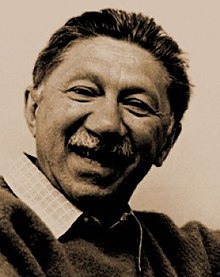Blessed Luv DIY its your DIY Activist here, today its about get motivated and still educated. Seeing that this is the a blog all about doing it your self, and seeing that black history months is just a few months away. I say it fit to share with you guys a very special woman in black history that was not only a freedom fighter but a wonderful seamstress. Yes a seamstress who what, you guest DIYed her own clothing and clothing for the oppressors. So hope you fuljoy today's post and please don't stop seeking knowledge check out the link and feed the minds. Leave your comments and keep following and stay tuned for more.
Peace and Blessed Luv.
MOTIVATIONAL WORD SOUND
"My grandfather once told me that there were
two kinds of people: those who do the work and those who take the
credit. He told me to try to be in the first group; there was much less
competition." —Indira Gandhi
ROSA PARKS- HISTORY'S DIYer
http://www.historylearningsite.co.uk/rosa_parks.htm
Rosa Parks
Rosa Parks will always be associated
with the Montgomery Bus Boycott of
1955-56 which many regard as the start of a major civil
rights offensive in America. Rosa Parks was a seamstress when the boycott
began but she was far from ill-educated.
Rosa Parks was born on February 4th
1913. America was effectively a segregated society, whether it was in the South
or in the cities of the north and east. Job prospects for African Americans were
poor and many could only look forward to the lowest paid jobs – and be
thankful that they had a job. Education, if it existed
for African Americans, was done within the community, especially in the south,
where schools were segregated. Buses and restaurants were also segregated in the
South. Whereas segregation in the South was obvious and open, the writer Zora
Hurston has pointed out that it also existed in many other parts of America,
though more disguised. This was the America in which Rosa Parks grew up.
Her mother was a teacher. She was also a
member of the NAACP, as was her step-father. Parks was
taught to read and write by her. Her first school only had one teacher in it to
teach all the children there, aged between five and their teens. Parks recalled
in an interview that there were as many as 60 students at her school - taught by
just the one teacher. The law stated that schools could be separate but equal.
Rosa Parks had a five month school year – the rest of her time was spent
working on farms.
Parks went to an all-black college, the
Alabama State College, but could only find work as a seamstress in Montgomery.
However, Rosa Parks was involved with the NAACP. She served as a local secretary
to it and was later an adviser to the NAACP Youth Council. In 1943, she had
experienced discrimination on the buses in the South firsthand. Having paid her
fare, she was told to use the back entrance of the bus to get to the ‘black’
seats at the back of the bus. As she walked to this door, the bus drove off
leaving her where she was. However, as a member of the NAACP, Parks would have
known about the Claudette Colvin story.
On December 1st, 1955, Rosa
Parks refused to give up her seat on a bus to a white man who was standing as
all the ‘white’ seats had been taken. She was arrested and on December 5th,
a boycott of the buses started that lasted for 381 days. The boycott only ended
when shop keepers in Montgomery urged a settlement as their livelihoods were
being ruined as so few African-Americans went into Montgomery to do any
shopping. In 1956, the Supreme Court deemed that segregation on buses was
unconstitutional. Along with the ‘Brown’ decision
of 1954, this legal ruling is seen as being of great significance in civil
rights history. Parks was given the title “Mother of the Civil Rights
Movement” – though it is a title she is modest about.
| “Four
decades later I am still uncomfortable with the credit given to me for
starting the bus boycott. I would like (people) to know I was not the
only person involved. I was just one of many who fought for freedom.” |
When asked why she refused to give up
her seat when three other African-Americans did, Parks replied:
| “Our
mistreatment was just not right, and I was tired of it. I kept thinking
about my mother and my grandparents, and how strong they were. I knew
there was a possibility of being mistreated, but an opportunity was
being given to me to do what I had asked of others.” |
The success of the boycott and the decision by
the Supreme Court did change Montgomery – but it also made Parks enemies. She
and her family moved to Detroit to escape racists. In 1987, Rosa Parks, with her
husband, established the Rosa and Raymond Parks Institute of Self-Development.
This organisation provides career training for black youths but it is also
involved, via its Pathways to Freedom, with educating youths on civil rights
history by visiting the scenes of important civil rights cases.





